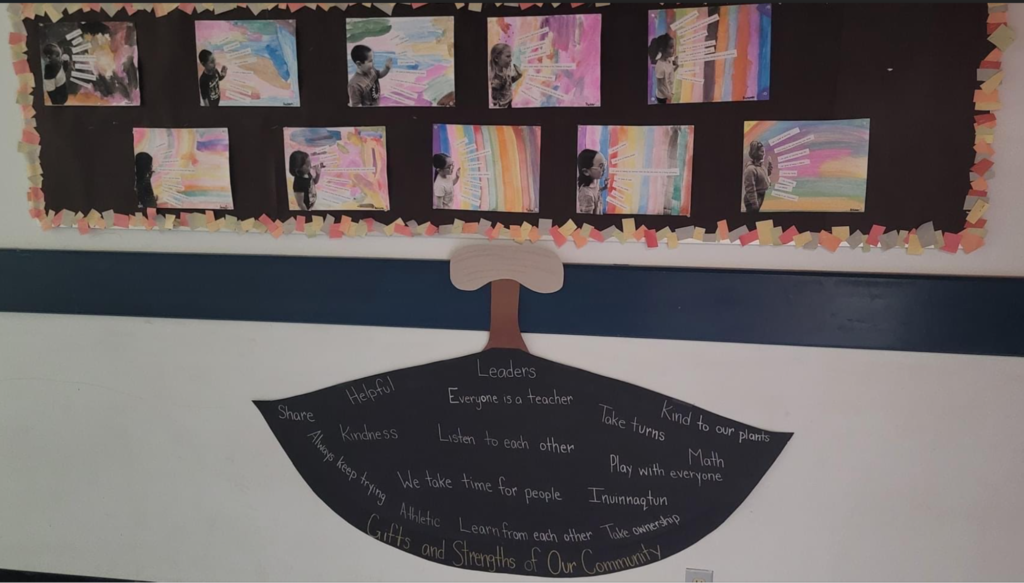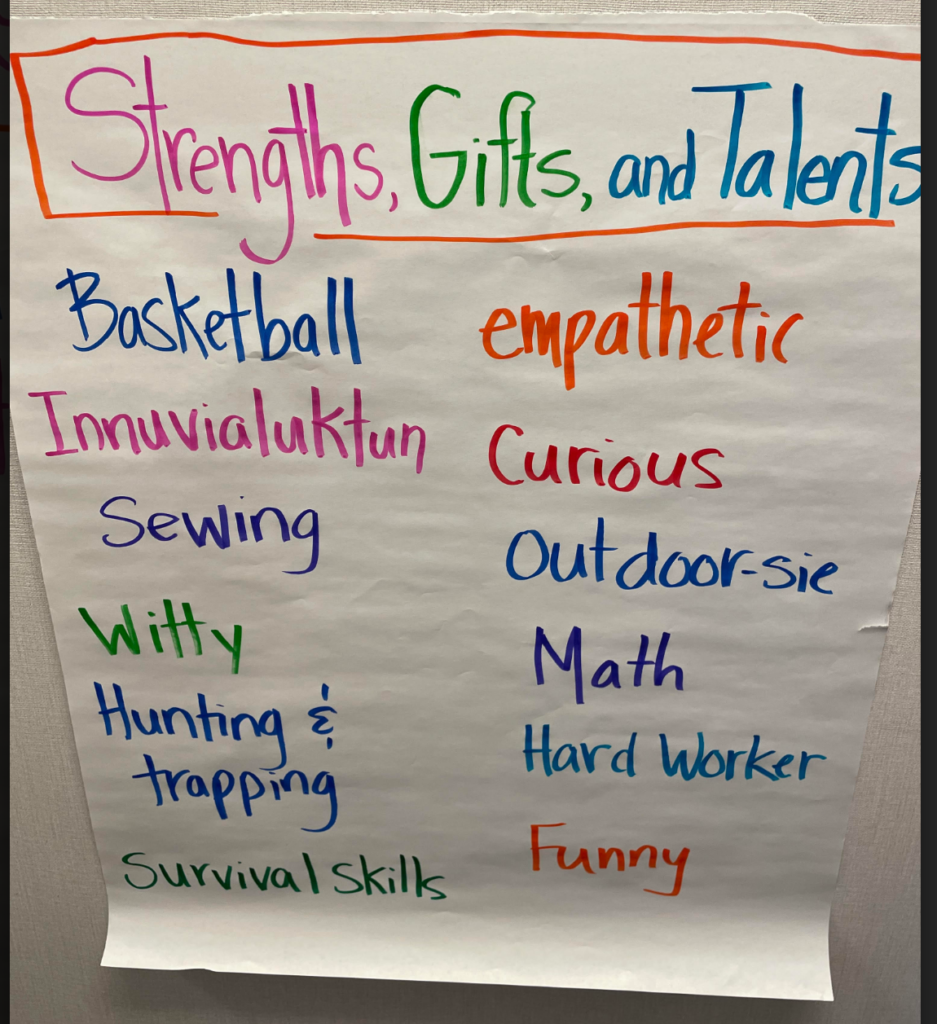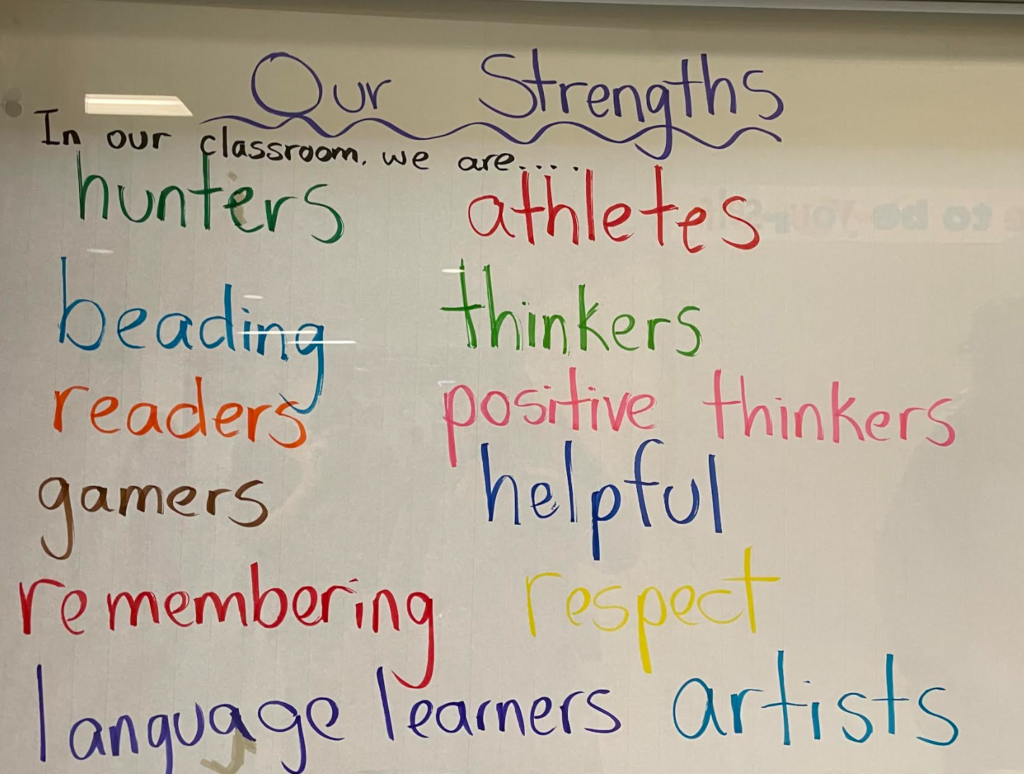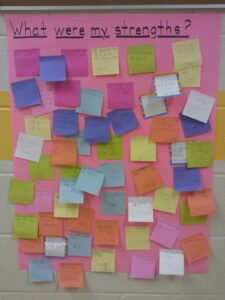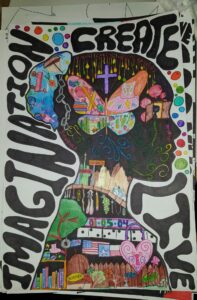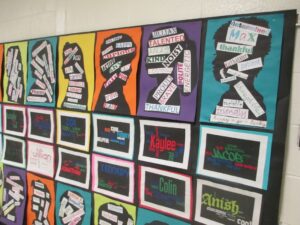Building The Community of Learners: Collective Strengths
Guiding Understandings:
“Where it is expected that schools will validate the existing knowledge base of the students and provide an environment, experiences, and knowledge, where students may work toward fulfillment of their gifts and purposes in accordance with the laws of Creator, passed down through the collective stories, traditions, customs, and identities of Aboriginal peoples” (Battiste, 14).
We need to know each other and learn about our gifts and strengths in order to work together in a good way and honor who we are in a relationship of learning “with”. The more we know who the learners in the classroom are, what they like, what they are good at, and what their strengths and interests are, the more we can nurture them to grow and evolve in multiple learning situations. The communal knowledge base and capabilities of students fuel growth in the learning environment and deepen relationships. Collectively a connected classroom environment can support ALL learners in their journey towards becoming capable. “We cannot give our gifts away until we know what our gifts are” (Monique Gray Smith).
Big Idea: Understanding the multiple ways people are capable in a community helps us access those strengths and talents in a variety of situations that foster stronger relationships.
Understanding the multiple ways people are capable in a community helps us access those strengths and talents in a variety of situations that foster stronger relationships.
Essential Question:
How can we strengthen our community by learning about the gifts and talents of its members?
Culminating Tasks:
A profile of the students in the classroom community with their strengths.
A list of what the classroom community can do based on its strengths.
Complete the strengths, gifts and talents section of the Classroom Support Plan and make sure it is shared with ALL staff who teach this class.
Connections to Key Competencies:
Nurture who I am and who I want to be: This competency relates to identity and ways to grow an understanding of the self.
Construct ways of being and living well together: Understanding collective and individual strengths and working together towards common understandings and goals.
Connections to Capable Person:
Students who are able to identify what makes them strong in their culture and themselves through personal ideas and connecting to community
Students who are able to identify gifts and talents that they can grow in their culture and in the school
Oracy strategy (ies):
Using the oracy strategy A B Partner Talk, students will develop the skills to gather ideas and thoughts on a given topic by actively listening to their partner’s ideas and then giving their partner their own ideas so that they can be shared out to the whole group by each other.
Using the oracy strategy Partner Interview students will develop the skills to gather ideas and thoughts by asking and answering given questions.
Inquiry Type:
Guided Inquiry: Students will receive explicit step-by-step guidelines at each stage, leading to student input to a greater class discussion.
Gauging Prior Knowledge and Honoring Student Voice:
The following activities are suggestions only, BUT they may assist you with completing the culminating task. Oracy development is a must! Teaching the strategy outlined is necessary in some way. As a Classroom Teacher, you may choose which activities to complete, which to remove, and where more activities need to be completed. The culminating task is mandatory to complete.
Products of Learning:
- A product that shows student’s, teacher’s, and SA’s individual strengths and talents. (This can be in writing, an Art product, a graphic representation etc)
- Added pictures/words around the community belief statement to highlight the collective community strengths.
- An anchor chart visible in the room labeled “What can our community do?”
Possible Pathways:
- Teacher facilitated discussion about individual strengths and collective strengths using DK and IQ references (see resource sheet)
- Students spend time working through a guided activity to think about their strengths and talents
- Input from families or community connections to help students come to know their strengths and talents (Family interviews and class share)
- Students can represent their personal list in a variety of forms
- An ongoing Anchor chart to track what your community of learners can do and to support an understanding of collective strength and growth.
Learning Connections:
- Dene Kede (p. XXV) & Inuuqatigiit (P. 10)
- ELA Outcome 1 & 5
Teacher Reflection:
- How can we program specifically for the students we are learning about?
- How does this component help us complete the Classroom Support Plan?
- How do you plan to make your classroom one where strengths, talents and interests are at the center of planning for teaching and learning?
Activities
Activity 1
- Students will begin to work on the competency of communication through oracy skills. They will use structured partner talk in this activity.
Strategy: AB partner talk with a given script
How To:
- Partner students into 2s choosing which will be Partner A and Which will be Partner B
- Student pairs are given a short script
- Students share ideas with one another in order to answer the question that is in the script
- When it is time to share, The teacher chooses partner A or B to share first and then in the next round the other partner shares.
- A shares for B and B shares for A
Topic: Our Favorite Things
- Partner A: My partner’s favorite things are: __________________.
- Partner B: My partner’s favorite things are: __________________.
Activity 2
Land and Community Connection
Revisit your SA’s story and see if there are any land based skills or learning they are eager to share with your students. Meet with your SA and develop a plan to do a land based activity with your class.
If you don’t have an SA yet, ask your students what are some things they love to do outside and on the land. As a class, develop a plan for a land based activity that is manageable for the time and resources that you have. (Involve the school admin if you need a community resource person or an Elder to join you or some supplies such as food or transportation).
Some Ideas to get you started:
- Go for a nature walk and identify local plants
- Participate in some Fall fishing, or help process a Fall harvest
- Travel to a culturally important place that’s near to the community
- Have a cookout
- Elder storytelling or traditional games in the school tent
One of the goals in this land connection section will be to notice the strengths and talents and gifts of the students in your class. Time on the land is an excellent way to notice the gifts of students. Remember to be observant and mindful of what students show you during these land experiences.
Activity 3
Collective Strengths Resources
Strengths: tasks or actions you can do well. These include knowledge, proficiencies, skills, and talents. People use their traits and abilities to complete work, relate with others, and achieve goals.
In Indigenous communities, strengths are related to the gifts and talents each Indigenous child possesses. The goal for children in Indigenous communities is that the adults in their lives help them recognize and nurture these gifts and talents.

Dene Kede
“Each Child is unique in talents and abilities. The task of those around the growing child is to provide experiences which will enable the child to become what it is meant to be” (Dene Kede, Pg. XXV)
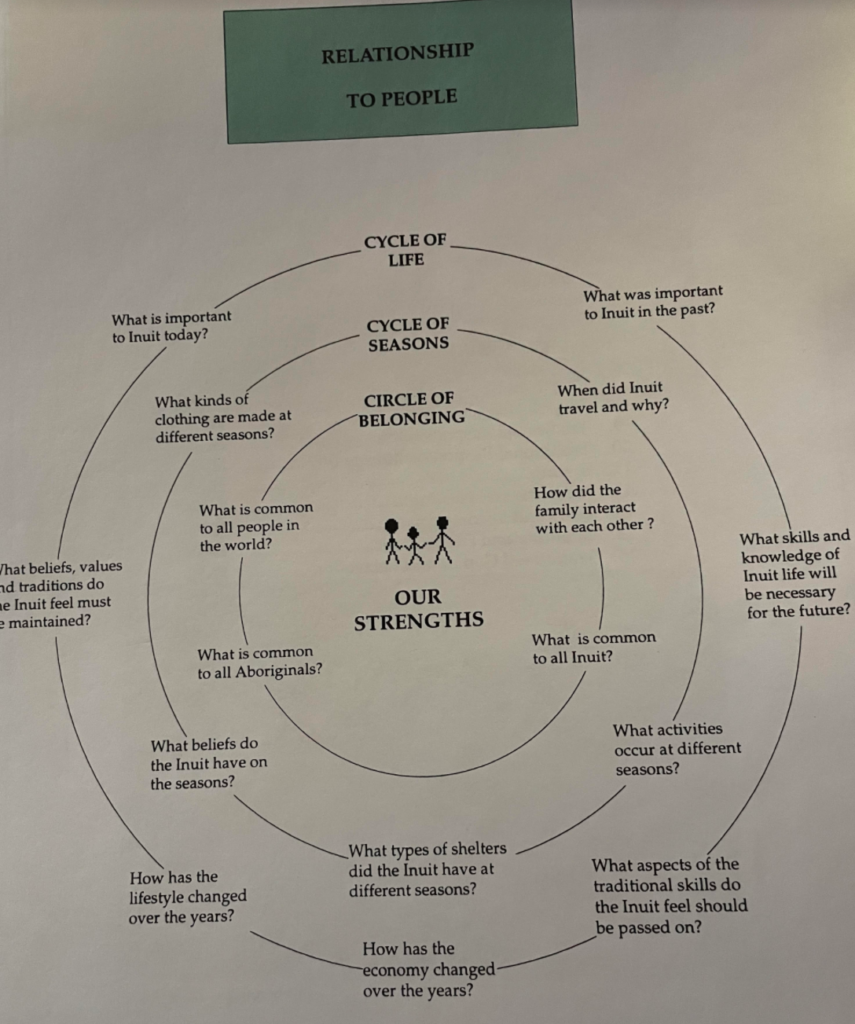
Inuuqatigiit
“Children have their own strengths and feelings, and are trusting of other people. Children want to be believed, heard, understood, happy, independent and to have friends ” (Inuuqatigiit, Pg. 10).
Suggestion: Have students collaborate in small groups with a placemat to gather ideas. You could have visuals in each section or a question recorded. This framework helps guide and support discussions. Small groups can share to the whole class after a given period of time.
Questions to help students discover their own Strengths and Talents:
- What do you LOVE to do?
- What are you good at?
- What makes you special?
- Who can benefit from the things you are good at?
- What can you bring to our classroom community?
Here is another way you can help your students think about and record their strengths and talents:

Activity 4
Learning to communicate in the community: Partner Interview
- Students will be partnered in groups of 2
- Student pairs will ask each other 2 questions each
- Students take turns asking each other the questions
- When it is time to share, each student will share their partners’ answers to the whole group (Example: Strengths and Talents)
Questions:
- What are some things you feel you are good at?
- What are some things you really enjoy doing?
Teacher role: On chart paper, the board etc record the strengths that are shared so that you can have a list of them to use in the next module.
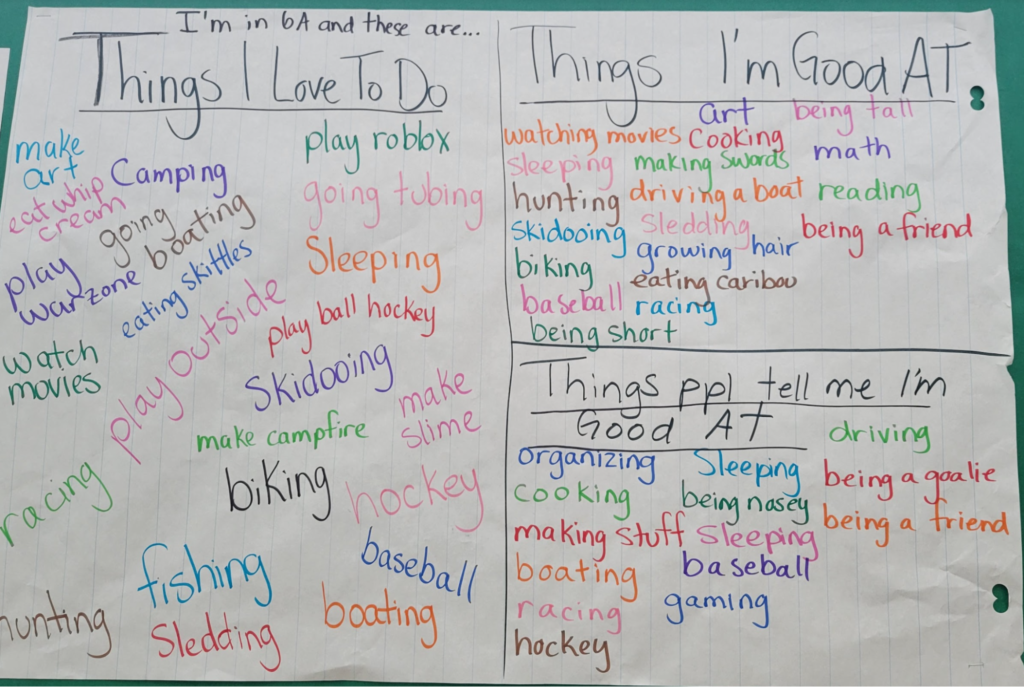
Activity 5
Family/ Elder Contribution
We are so excited to learn about your child/ grandchild etc. Please fill out the information below so we can get to know ______________________ better!
- What are __________________________’s Strengths:
- What are __________________________’s Talents:
- In what ways do they show these in your family or in the community?
- How can the school help grow and nurture these strengths and talents?
Activity 6
Sharing Out Strengths and Talents
Culminating Task
The ‘share out’ that happens after the activity is one of the critical elements of how we foster a community of learners that values, appreciates and respects the importance of each member. To be able to draw on the strengths and talents of individuals it is essential that they are displayed, shared, and celebrated both inside and outside the classroom environment.
Strengths and the community:
Ideas for Strengths Shareouts beyond the classroom:
- Create an electronic school ‘yearbook’ of students strengths and talents and share on social media, school website and email to families.
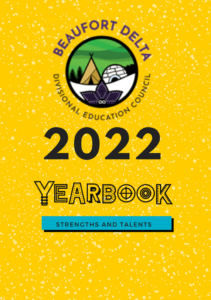
- Create a bulletin board at the school entrance highlighting school staff and students strengths and talents. Rotate monthly, ensure all school community members are recognized. (Create a collective strength bulletin board)
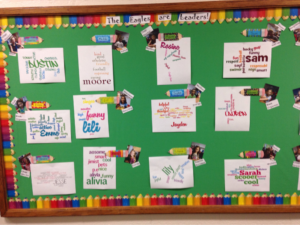
- Highlight staff and students strengths and talents on daily announcements, social media, class newsletter posts and the local radio.
- Staff intentionally call family and community members to share moments when students demonstrated their strengths and talents.
- Organize class fun nights or meet the teacher nights where parents and family are invited into the school and have teachers ask about additional student strengths, gifts and talents during this connection time.
- Take photos of activities that have been done with students that show strengths, interests, gifts and talents and display them in the classroom with the inventories of classroom strengths.
